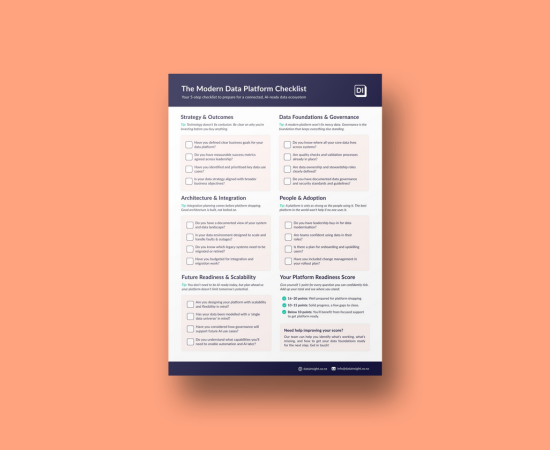Generative Artificial Intelligence, commonly known as Generative AI or Gen AI, is causing quite a stir in the tech landscape, bringing with it a new perspective to how computers learn, interact with users and create content.
This cutting-edge technology has the potential to reshape how organisations work, positioning itself as a cornerstone of next-generation analytics. In this article, we will outline what Generative AI is, how it works, and some of the potential risks involved when using it.
What is Generative AI?
Generative AI refers to a segment of artificial intelligence dedicated to content creation rather than mere analysis or interpretation of existing data.
Unlike traditional AI models, which predominantly focus on classification or categorisation of data, Generative AI models take a unique approach by generating entirely new content from data that can closely resemble human-created content.
These models undergo training on extensive datasets, mastering the intricate patterns and structures within the data. This enables them to produce outputs that are often indistinguishable from humans, setting them apart from traditional artificial intelligence.

How does Generative AI work?
Generative AI works by training a machine to understand and mimic patterns from various types of data like text, video, or images.
This data is then used to generate new, realistic outputs.
There are three key elements to how Generative AI works:
01. The Data
Gen AI requires a huge amount of data, as an example ChatGPT is built upon 300 billion words, and this is being added to all the time to improve it’s accuracy. The type of data you need is dependent on the type of Generative AI.
02. The Architecture
Generative AI relies on a concept called Artificial Neural Networks (ANNs), these are models inspired by the structure and function of the human brain, allowing them to understand interconnections, learn patterns and adapt over time, and perform multiple tasks at the same time.

There are a number of ANNs and these are dependent on what you want to use them for, such as:
- Transformers – these are made famous by OpenAI’s ChatGPT (Generative Pre-Trained Transformer). They are used in Large Language Models (LLMs) as they can understand the context or meaning of each word relative to the other words in a sentence, this enables it to construct coherent sentences.
- Generative Adversarial Networks (GANs) - popular in image generation, they operate like a creative pair – a generator (creator) and a judge (discriminator). They collaborate continuously: the generator makes synthetic data, and the discriminator evaluates it and tries to spot ‘fakes’. This loop continues until the generator crafts data that's nearly identical to real data and is accepted by the discriminator.
- Variational Autoencoders (VAEs) - behaving more like artists than traditional models, are special models that understand the core structure of input data. They learn from examples and produce various versions based on what they've learned.
03. The Training
All Generative AI models need to be trained. Just like a child it needs to be corrected to ensure that the sentences or outputs that it generates are correct. This is an iterative process of improvement.
.png)
Understanding the risks of Generative AI:
While Generative AI is super exciting tech, it also presents several risks that need careful consideration:
- Misuse and Deepfakes: The ability of Generative AI to create highly realistic content can lead to its misuse, such as generating deceptive deepfake videos or images, posing significant ethical and security concerns.
- Inherent Biases: Training data biases can be inadvertently encoded into AI models, leading to biased outputs that may perpetuate stereotypes or discrimination. This underscores the need for ethical data curation and model training.
- Data Hallucination: Generative AI models, at times, 'hallucinate' by generating inaccurate or completely fabricated information. This can pose substantial risks, especially when such outputs inform critical decisions or mislead customers.
- Information Leakage: Utilising Generative AI tools like ChatGPT risks unintentional exposure of sensitive internal information or intellectual property, necessitating robust data handling and security measures.
To help mitigate these risks, one strategy is to establish robust AI Policies and governance frameworks tailored to your organisation.
We have put together some free resources to help get you started, download our AI Policy and Checklist templates >>
These policies outline guidelines and safeguards, ensuring responsible and ethical use of AI technology within your organisation.
Generative AI is ushering in a new era of possibilities, from creative content generation to business process optimisation.
However, as with any powerful technology, it is essential to navigate potential risks and ethical considerations responsibly. Organisations that harness the potential of Generative AI stand to gain a competitive edge in innovation and efficiency, provided they approach its implementation with a thoughtful and ethical mindset.
Check out our next blog where we highlight practical use cases for Gen AI in your organisation >>








.png)